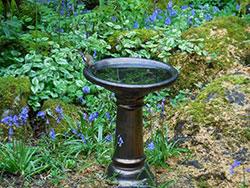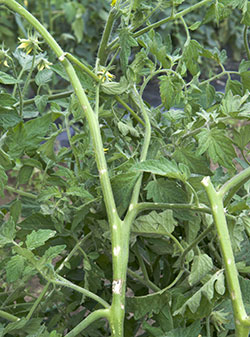Adapted by Deryn Davidson from the CO-Horts blog originally authored by Carol O’Meara, CSU Extension Boulder County

During years with heavy rains, a gardener’s yard is filled with opportunities for mosquitoes to lay their eggs. To reduce the risk, change bird bath water twice per week; dump out water that collects in the dish beneath pots; turn over unused pots, saucers, trays and buckets; and use Bt doughnuts to float in your ponds or water features. Bt, short for Bacillus thuringiensis, is a natural way to kill off the mosquito larvae in your water.
To protect yourself while working in the garden, cover up or use a mosquito repellent that’s effective against West Nile Virus-carrying mosquitoes. Check with your local health department for suggested repellents.

If your plants fall victim to hail storms, take heart: it looks bad now but, depending on the plant, its maturity, and time left in the season for recovery, all may not be lost.
Vegetable root crops, such as potatoes or beets, with destroyed leaves could send up new shoots, compromising quality of the crop. In this case the produce may not be worth the growing space. For leafy vegetables, be patient: give them at least a week to recuperate after the storm, and if there’s no sign of life, replant.
Flowering annuals stripped of their leaves may not survive, but replanting will ensure a good display later in summer. If there are a few bits left on the stem, you can clean them up and give them a light application of fertilizer. They might recover.
Severely shredded leaves on smaller perennials should be cut back to the ground, and if the leaves aren’t too damaged, leave them alone. Bleeding hearts and other perennials with soft stems that look reasonably unharmed should be cut back part way. Generally they’ll sprout new leaves along the stem at the junction between the old leaves and the stem.
Work fertilizer in around any damaged perennials that are well established to give them a boost for recovery. Those with firm stalks should be cut partially back. If they don’t sprout new leaves on existing stems, look for new stems pushing up from their roots.
Trees and shrubs not pushing new leaves need to be closely monitored. Examine your woody plants for wounds in the bark or torn limbs; clean up the wound site with a sharp knife and let the plant heal itself.



